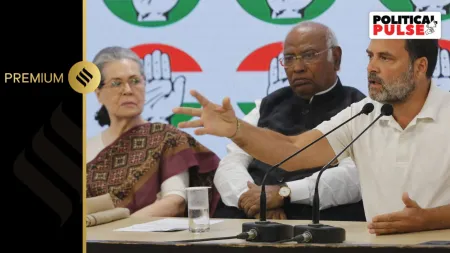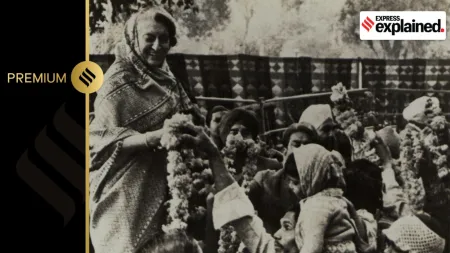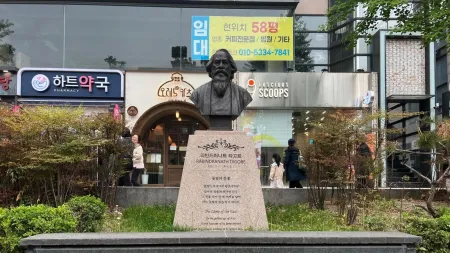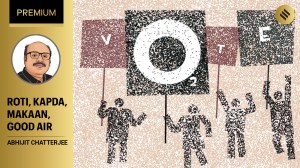- India
- International
How PM Modi’s note recall narrative has fallen apart
Black money stashes are not turning into rubbish, but the government’s stated objectives are
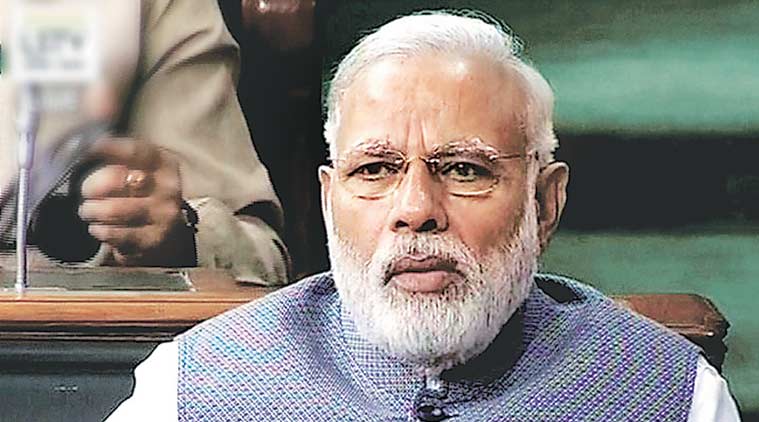 In the aftermath of November 8 announcement by PM Modi, there was general euphoria about the impending disaster that was about to befall black money holders who, it was imagined, would have had to see their ill-begotten wealth turning into garbage overnight.
In the aftermath of November 8 announcement by PM Modi, there was general euphoria about the impending disaster that was about to befall black money holders who, it was imagined, would have had to see their ill-begotten wealth turning into garbage overnight.
Three weeks ago, the decision to scrap 500 and 1000-rupee notes was sold as a moral crusade, indeed, as a war on corruption. This narrative has now fallen apart. On November 29, Lok Sabha forced through a bill that ends the war and assures safe passage to those who hold black money in cash.
WATCH VIDEO: Find Out What PM Modi Said About Demonetisation On LinkedIn
The bill is an invitation to those who have kept their undeclared income in cash to pay the government half of it (including tax, penalty and surcharge) and in return, turn the balance 50 per cent into legal white money. They would also need to lock in half of the new, legally- laundered money in a bond specified by the government for four years. The lock-in is certainly an inconvenience but not a loss to the black money holders because they would not have been getting any interest on their cash hoards any way. The new scheme is a generous offer when compared with the original statements made by the government that any black money holder found depositing denotified currency in banks would face a 200 per cent penalty and thus lose nearly all of his stash.
But this is an even more generous offer when seen in the context of how professional black money holders will perceive this new amnesty scheme. First of all, as we know from income-tax raids in the past, people with black money only have about 6 per cent of it in cash – the rest is usually in the form of land, apartments, gold, jewellery, benami bank accounts and so on.
WATCH VIDEO: Speed News: Parliament, Pakiatan, PM Modi, Arun Jaitley & More

But for the sake of abundant caution, let us assume the cash percentage is as high as 10 per cent as some insist. For example, let us consider a small-sized operator with Rs 10 crore in black money, of which about Rs 1 crore is in the form of cash. The demonetisation effort, to begin with, only threatened this Rs 1 crore, and that too, to the extent that it was held in the form of Rs 500 or Rs 1000 notes. If we assume that all of it was held in Rs 500 or Rs 1000 notes, then the possibility was of him losing about a tenth of his total illegal wealth. Considering that a well-heeled salary man pays about 30 per cent of his income in taxes every year, the demonetisation move was the equivalent to a slap on the wrist for the black money holder, because in percentage terms, he was in danger of losing only a third of what the honest taxpayer gives to the government every year– and that too if we assume he could convert none of his Rs 500/ Rs 1000 rupee notes to new ones through some shady scheme or another.
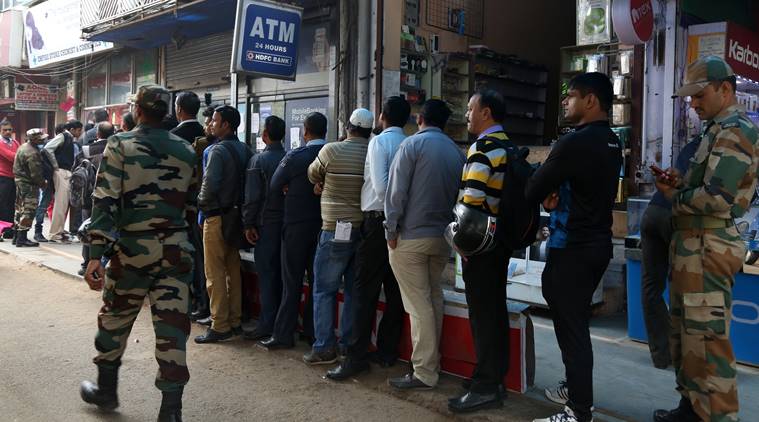 People queue up outside at HDFC Bank at Delhi Cant. (Express photo by Renuka Puri)
People queue up outside at HDFC Bank at Delhi Cant. (Express photo by Renuka Puri)
So what is the situation now, with the new law? Now he stands to lose not even Rs 1 crore, but only Rs 50 lakh, or about 5 per cent of the black money he holds. In other words, if the black money holder compares himself to the honest taxpayer, he would probably congratulate himself for his foresight and planning. He has had to pay only about a sixth as much as the honest taxpayer, and he can sleep easy now, knowing that the government itself has officially laundered all of his remaining cash at a reasonable cost. What he holds in other assets was under little real threat anyway.
How and why did we reach here? If you remember, in the aftermath of November 8, there was general euphoria about the impending disaster that was about to befall black money holders who, it was imagined, would have had to see their ill-begotten wealth turning into garbage overnight. There were even widely-shared images of burnt cash floating on the Ganga and scattered on the streets. Almost everyone supporting the Notebandi mentioned his satisfaction of seeing the corrupt in trouble as the main reason.
But here we are, three weeks later, with that narrative now standing on its head. The same government that was trying hard to keep black money holders away from banks by leaking a steady stream of scare stories about what tax authorities would do to those who dared to put their black and banned currency notes in banks, is now virtually beseeching them to come, deposit and declare their stash. “The tax department will not ask for the source of funds deposited,” said Union Revenue Secretary Hasmukh Adia. One has to be thankful that the government hasn’t gone further and announced that those who declare the maximum amount of black money under the scheme will be considered for Padma Shris.
With the amnesty scheme in place, it now makes no sense for anyone not to deposit his old Rs 500 or Rs 1000 notes in bank – why would he let the full value of it go up in flames, when he can retain half of it with little risk and no effort? To put it in other words, the amnesty scheme is NOT an addition to the original plan of keeping black money out of the banking system and thus turning it into waste paper – it is a full and complete replacement of it.
 Given cash shortages with banks, and ATMs running dry, bankers fear a surge in rush. (Source: PTI)
Given cash shortages with banks, and ATMs running dry, bankers fear a surge in rush. (Source: PTI)
So what explains the 180-degree about-turn the government has taken in a matter of weeks? The short answer is this: The speed with which the banned currency notes have been returning to the banking system. By the end of November, two thirds of the outstanding notes had already been deposited in banks and according to a report in The Indian Express, it was clear to the government that with one more month remaining, nearly all of the money would return to the system. (Demonetisation: Month to go, bankers say 90-95 per cent money will return to system) The velocity and quantum of return means either that the original estimates of black money held in cash were wrong, or that there were enough large loopholes for the black money holders to get their cash into the system, or a combination of both.
Why is this a problem? This is a problem because the government was counting on a bonanza of free money for itself if enough people were scared away from depositing their banned currency notes in banks. This is how the thinking went, apparently: Currency notes in circulation are a liability for the RBI, and if say, 10 to 20 per cent of the outstanding Rs 500 and Rs 1000 notes didn’t return to the banking system, thus turning themselves into garbage, the liability of the RBI would have been reduced to that extent– and if you assume that 15 per cent did not return, the gain could have been as much as Rs 2 lakh crore. Since the RBI is fully owned by the government, this reduction in its liability could have been transformed one way or another into a bounty for the government to use as it deemed fit.
So now, if the money is all coming back into the system, that means this easy bonanza that they had been expecting, has evaporated away and so has the primary objective of the government. Theoretically, one can say that the tax department can still go after each of the large depositors and try to detect the black money holders and prosecute and punish them and thus recover money for the government. But the scale of such an operation in a country with hundreds of millions of depositors could be beyond the abilities of the department and even if they attempted it, there can be no certainty about the outcome either in terms of the overall size of the recovery or the time-frame in which it could be realized. In other words, as things stood, there was no way the government could have received a windfall and then gone and announced some electorally rewarding schemes for the masses based on it – perhaps in time for the five Assembly elections, including that in the all-important state of Uttar Pradesh, scheduled to be held in February-March 2017.
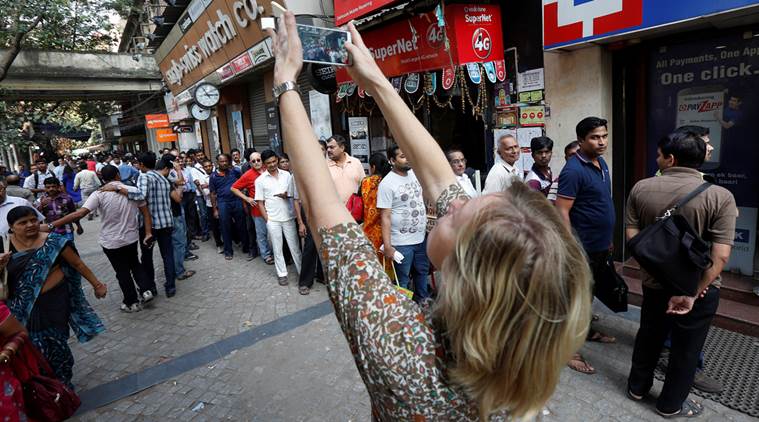 A foreign tourist takes pictures of people standing in a queue outside a bank to exchange and deposit their old, high denomination banknotes in Kolkata. (Source: Reuters Photo)
A foreign tourist takes pictures of people standing in a queue outside a bank to exchange and deposit their old, high denomination banknotes in Kolkata. (Source: Reuters Photo)
The amnesty scheme, therefore, is an attempt to accept the inevitable and salvage at least some money for the government. How much could that be? A generous estimate would say half of what was expected earlier (Rs 2 lakh crore), since only 50 per cent is being demanded of black money holders now. That could mean Rs 1 lakh crore. But is that the net gain for the government? Not really. You have to deduct the cost of the entire exercise from it. The cost of printing alone works out to Rs 6,000 crore and then there will be other expenses such as the logistics of the operation on a massive national scale. According to the Centre for Monitoring Indian Economy, the total printing and transportation cost comes to Rs 16,800 crore. Can we deduct this Rs 16,800 crore from the 1 lakh crore, and say Rs 83,200 crore would be the net gain? Not really, because this entire exercise will have a negative impact on the GDP, and one unavoidable consequence of that would be a hit on government revenue, which usually forms about 10 per cent of the GDP. If the GDP is hit by 2 per cent according to what former Prime Minister Manmohan Singh says is a conservative estimate, that could cost the government as much as Rs 30,000 crore in revenue, if we assume for reasons of simplicity that the ratio of tax revenue to GDP remains constant.
But even if one is optimistic and thinks GDP growth will be hit to the extent of only 1 per cent, not 2 per cent, the hit to government revenue will still be around Rs 15,000 crore. Can we deduct this from 83,200 crore and say the net gain will be about Rs 68,200 crore? Not really. There are other costs we have not counted at all – such as say, compensating developers for the loss of toll on national highways, estimated at Rs 65 crore a day, or Rs 1,365 crore till December 2; or the losses in revenue incurred by government undertakings because of the economic disruption; or the possible rise in non-performing assets of public sector banks due to induced slow-down. At a very modest estimate, let’s say the total hit on these counts is Rs 10,000 crore. We are then left with about Rs 58,200 crore as the net gain for the government – not even a third of the original expectation.
How big a deal is that? Big, but not something that will fundamentally alter government finances. As a percentage of total government expenditure (about Rs 20 lakh crore) it amounts to less than 3 per cent. By way of comparison, just the implementation of the 7th Pay Commission recommendation on the salaries of government employees will cost the government an additional expenditure of a little over Rs 1 lakh crore annually from this year onwards! The net gain from the note recall exercise is also less than the amount the government is committed to providing public sector banks to recapitalise them and thus protect them from the consequences of humongous bad loans: Rs 70,000 crore over four years, which is itself regarded as highly insufficient. It is interesting to note that Rs 58,200 crore will be only twice as large as the money collected through the earlier voluntary disclosure scheme for black money that closed on September 30 this year and raised Rs 29,000 crore – and this was an exercise that did not involve bringing the entire economy to a near- standstill.
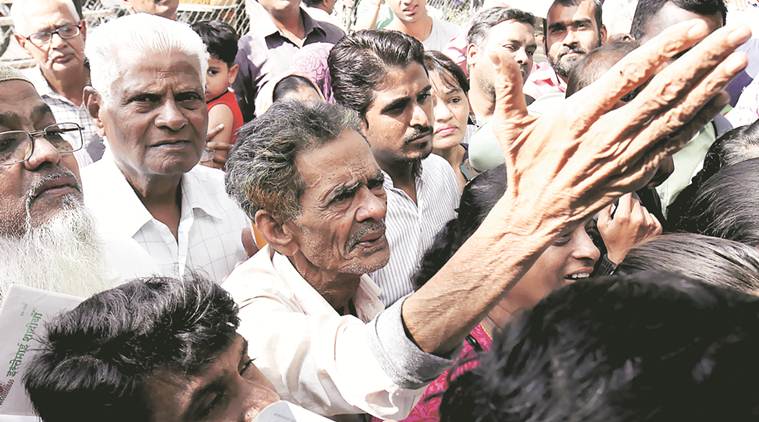 If we look at it from the point of view of the 1.2 billion citizens and the entire economy itself, the picture gets much worse.
If we look at it from the point of view of the 1.2 billion citizens and the entire economy itself, the picture gets much worse.
In other words, as it stands now, it is unlikely that the net gain to the government will be a game changer. It is important that whenever Parliament begins to function properly, the government be asked to come out with a full cost-benefit analysis that leaves nothing out and accounts for everything.
So far, we have come to two important realizations: (a) Notebandi is now not a war on corruption, but is rather a welcome-arch for black money holders to convert their cash stash into legally white money; and (b) the bonanza that many saw on November 8 is likely to remain a mirage.
But we are not done yet. We have only looked at the cost-benefit analysis from the point of view of the government. If we look at it from the point of view of the 1.2 billion citizens and the entire economy itself, the picture gets much worse. Even a one-per cent hit on the GDP means a loss of Rs 1.5 lakh crore, far higher than any potential gain to the government. In other words, from an economy- wide perspective, the loss outruns any possible gains by a very wide margin – it is as if the government has socked the economy for a few crores more in its own kitty. And this doesn’t even begin to take into account the personal tragedies and losses that hundreds of millions of innocent citizens have had to suffer over such a long period.
This, perhaps, explains why the government is keen to present the Notebandi now in a different light altogether – as a modernisation move that will lead to a cashless economy, rather than a war on the corrupt. There are indeed huge and attractive businesses to be built around mobile payments; this has drawn the attention of top corporate houses; and the herding of hundreds of millions into mobile payments will be good news for them. But what positive – or negative impact – it will have on the unorganised sector and the people dependent on it is yet to be seen.
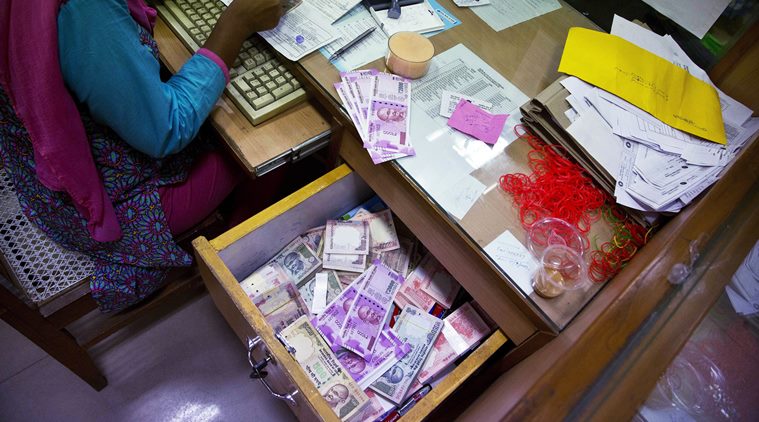 Prime Minister Narendra Modi, delivering one of India’s biggest-ever economic upsets, declared that the bulk of Indian currency notes no longer held any value and asked anyone holding those bills to take them to banks to deposit or exchange them. (Source: AP Photo)
Prime Minister Narendra Modi, delivering one of India’s biggest-ever economic upsets, declared that the bulk of Indian currency notes no longer held any value and asked anyone holding those bills to take them to banks to deposit or exchange them. (Source: AP Photo)
What one must also point out is that as long as political parties – especially the ruling party that is pushing the cashless economy narrative – do not stop accepting any money in cash, their paeans for the cashless economy will ring hollow and insincere. If the country as a whole is ready for a cashless economy, what earthly reason can there be for a political party, especially the ruling one, not to discontinue taking donations in cash with immediate effect, and also set up an independent mechanism to strictly monitor all political funding?
Long after the final accounting of this exercise is taken, what will gall observers will probably be the total unconcern the government showed about the way the decision affected the lives of hundreds of millions of ordinary people. Decision after decision was taken with the intention of maximising the gain to the government, but without a thought as to how these affected the lives of the most disadvantaged such as the unbanked. The most striking example of this was the discontinuation of currency exchange for those without accounts, which was done in violation of specific promises by the RBI and even advertisements by the government. Even now, the unbanked find it difficult to open accounts and salvage whatever savings they have accumulated over a lifetime because the powers-that-be have not found it necessary to take their concerns on board. This may yet turn out to have been a politically astute move, but that won’t change its character as a morally flawed decision that sought to punish the many for the sins of the few – and for the sake of a political narrative that no longer holds water.
Tony Joseph is former editor of Business World. The views expressed are personal.
May 09: Latest News
- 01
- 02
- 03
- 04
- 05


